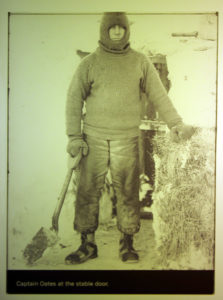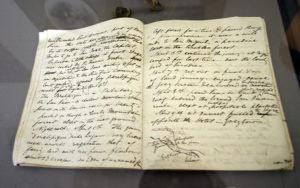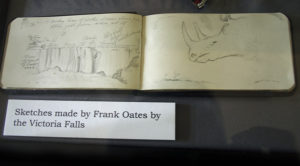Gilbert White lived in Selbourne for fifty years while he was curate at the church. His house was bought in 1955 with money from Robert Washington Oates, who was cousin of Captain Oates who went with Scott to the South Pole in 1911-12. The house has been restored to house an exhibition about the life and work of Gilbert White as well as the rooms he lived in. There is information about them “here.”:http://wasleys.org.uk/eleanor/presocialhistory/socialhistory/social/social/gilbert_white/gilbert_two/index.html
The rooms on the first floor of the extension added after the death of Gilbert White now contain the Oates Collection. The FRANK OATES ROOM concentrates on the life and voyages of the C19th explorer Frank Oates, who was the uncle of Captain Oates. He studied Natural Sciences at Oxford but was forced to give up due to ill health. He visited America in 1871 in an attempt to regain his health, continuing down into Central America. Two years later he visited Africa and was the first European to visit the Victoria Falls, but died of a fever a few months later. He recorded the plants and animals he saw and a made a large collection of natural history specimens. His notebook and sketch book are on display as well as a lot of information panels about his expeditions.
The last two rooms concentrate on Captain Lawrence Oates and the ill fated expedition led by Robert Falcon Scott to reach the South Pole in 1911/12. The OATES CONFERENCE ROOM displays some of the film footage renamed ‘Ninety Degrees South’ taken by Herbert Ponting during the expedition. Scott was the first explorer to take a professional photographer with him and the black and white photography is of amazing quality. The ‘Sutton’ Collection was brought back by Chief Petty Officer Tom Williamson who was a member of the search party that found Scott’s last camp and the bodies of Scott, Wilson and Bowers.
The ANTARCTIC GALLERY complete with whistling wind sound effects tells the story of Captain Oates and the race to the South Pole. Artefacts from the expedition include clothes, snow shoes and a sledge. These could be pulled either by ponies, dogs or man handled. Scott decided to use horses and one of Oates responsibilities was to look after the horses. Unfortunately the ponies taken to the Antarctic were poor beasts and unable to withstand the bitterly cold conditions. This was one of the reasons contributing to the failure of the expedition.
There is a letter that Oates wrote to his mother and also transcriptions of some of his diaries which his mother asked to be destroyed.
There are enlarged photographs of some of the stills taken by Herbert Ponting during the expedition as well as copies of some of his still plates.
There are more pictures “here.”:http://wasleys.org.uk/eleanor/presocialhistory/socialhistory/social/social/gilbert_white/gilbert_three/index.html










